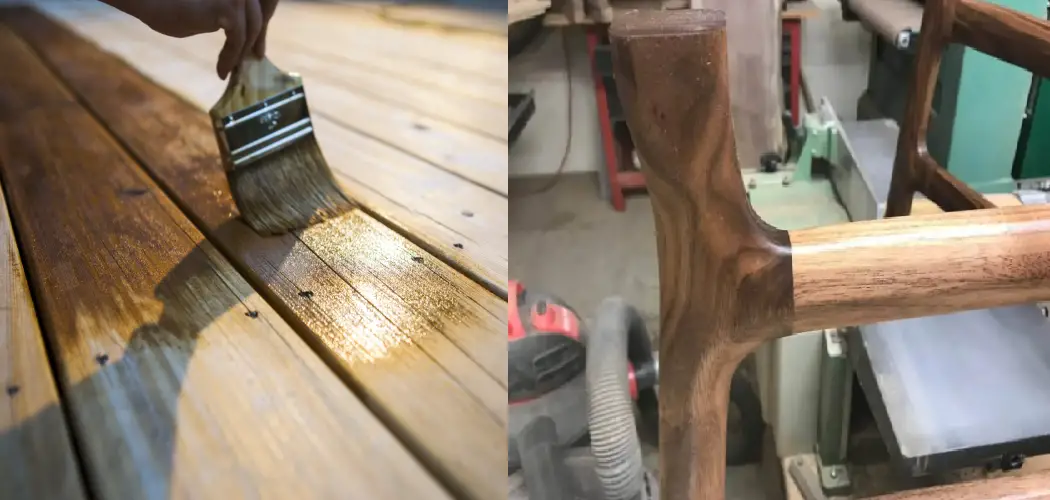Sticky wood stain can transform a promising furniture restoration or woodworking project into a frustrating challenge. Whether you’re dealing with an old piece of furniture that needs refreshing or applying a new finish to a piece you’ve crafted yourself, encountering a sticky or tacky stain can halt progress and dampen spirits. This issue usually arises from applying too much stain or not allowing enough drying time between coats. Fortunately, with the right approach and a bit of patience, this common problem can be remedied. This guide on how to fix sticky wood stain will walk you through the steps to fix sticky wood stain, ensuring your projects look professional and feel smooth to the touch.
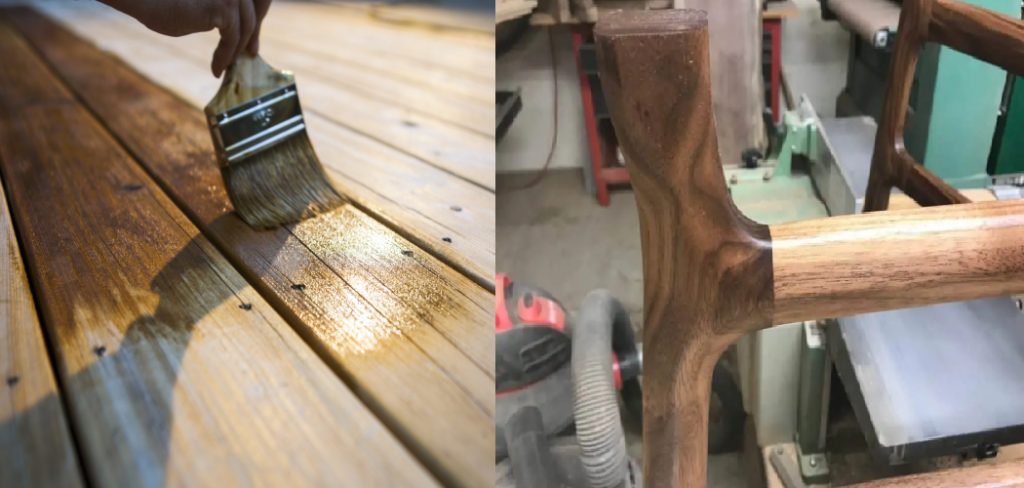
What is Sticky Wood Stain?
Before we dive into the solutions, let’s first understand what sticky wood stain is. Simply put, it is a condition where the wood stain does not dry properly and instead remains tacky or sticky to the touch. This can cause issues with further applications of stain or varnish and will result in an unattractive finish.
It is important to note that sticky wood stains can occur with both oil-based and water-based stains, although they are more common with the latter. This is because water-based stains dry faster and are more prone to drying issues if not applied correctly.
Causes of Sticky Wood Stain:
Several factors can cause wood stains to become sticky:
Applying Too Much Stain:
When you apply too much stain, it will not be able to properly dry and will remain tacky.
Not allowing enough drying time between coats: It is crucial to allow each coat of stain to fully dry before applying another one. Otherwise, the layers will not bond properly and will result in a sticky finish.
Humidity and Temperature:
High levels of humidity can slow down the drying process, resulting in a tacky stain. Similarly, extreme temperatures (too hot or too cold) can also affect how well the stain dries.
Using Old or Expired Stain:
If you are using old or expired wood stains, they may not dry properly and can lead to a sticky finish.
Removing Sticky Wood Stain:
If you have encountered a sticky wood stain, it is essential to remove it before attempting any fixes. Using a clean cloth or rag, wipe off as much of the stain as possible while it is still wet. If the stain has already dried, you can use mineral spirits or turpentine to help remove it.
Once the stain has been removed, follow these steps to fix the issue and achieve a smooth, professional finish:
Needed Materials:
Sandpaper (Various Grits):
To fix sticky wood stains, you’ll need to sand down the affected area. Depending on the extent of stickiness, you may need different grits of sandpaper. Start with a lower grit (such as 80) and gradually work your way up to a higher grit (such as 220) for a smoother finish.
Mineral Spirits:
Mineral spirits are a type of solvent that dissolves oil-based substances, making it useful for removing excess or sticky wood stains.
Clean Cloth:
A clean cloth will be needed to apply the mineral spirits and wipe away any excess.
Polyurethane Sealant (Optional):
If your project is not yet sealed with polyurethane, you may choose to do so after fixing the sticky wood stain. This will provide a protective and smooth finish.
12 Step-by-step Guidelines on How to Fix Sticky Wood Stain:
Step 1: Sand Down the Wood
If you have already applied multiple coats of stain, you will first need to sand down the wood to remove any remaining layers. Use fine-grit sandpaper (220 grit or higher) and lightly sand the surface until it is smooth and free of any sticky residue. You can also use an electric sander to speed up the process, but be careful not to sand too much and damage the wood. It is always better to sand lightly and gradually until the sticky feeling disappears.
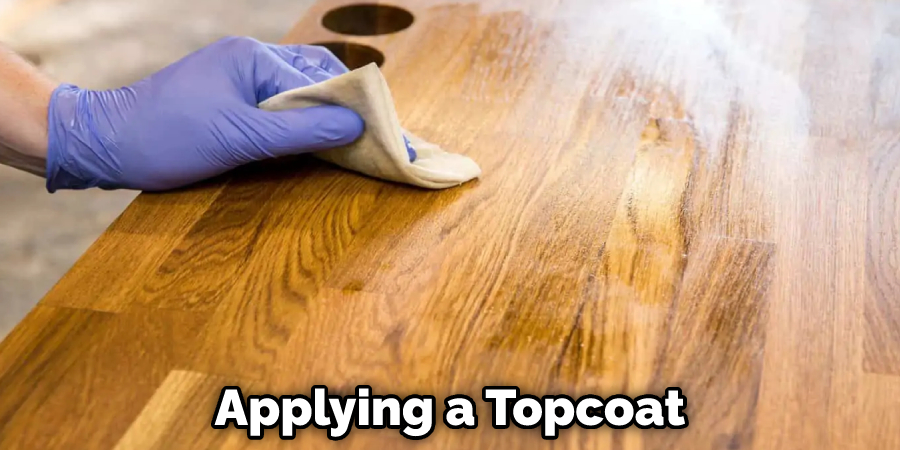
Step 2: Clean the Wood
After sanding, use a clean cloth or tack cloth to remove any dust or debris from the wood surface. This will ensure a smooth application of the stain. The wood must be completely clean and dry before proceeding to the next step. You can also use a vacuum or compressed air to remove any dust from hard-to-reach areas. It is essential to have a dust-free surface for the stain to adhere properly. You can also lightly dampen the cloth with mineral spirits to remove any remaining residue. The wood should be slightly damp, not wet.
Step 3: Apply Denatured Alcohol
Using a clean cloth, lightly dampen it with denatured alcohol and wipe down the wood surface. This will help remove any remaining residue and prepare the wood for a new coat of stain. Allow the surface to dry completely before proceeding. You can also use mineral spirits or turpentine instead of denatured alcohol. It is essential to use a clean, lint-free cloth when applying any of these substances. The wood should feel slightly tacky after this step.
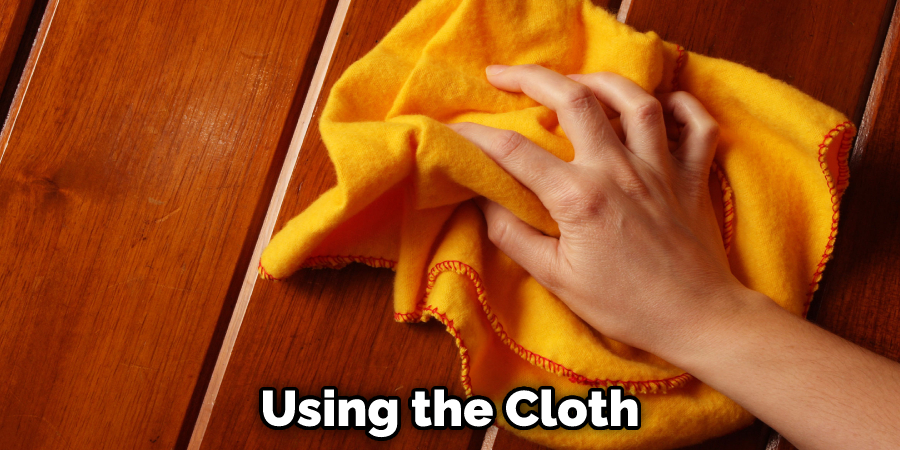
Step 4: Allow Time to Dry
After cleaning with denatured alcohol, allow the wood to dry completely before proceeding. This may take a few hours, depending on the humidity levels in your workspace. You can also use a fan or dehumidifier to speed up the drying process. You want the wood to be completely dry before proceeding with any further steps. It should not feel tacky or sticky to the touch. The surface should also be smooth and free of any residue.
Step 5: Sand Again (Optional)
If you still notice any areas of stickiness or residue, you can lightly sand those spots again with a fine-grit sandpaper. This will help remove any remaining layers of stain and provide a smooth surface for the new coat to adhere. You do not need to sand the entire surface again; just focus on the problem areas. But be careful not to sand too much and damage the wood. There should be a very light dusting of residue after sanding. The surface should feel smooth to the touch.
Step 6: Apply a Thin Coat of Stain
Once the wood is completely dry, it’s time to apply a new coat of stain. Be sure to use a thin and even layer, ensuring there are no excess pools or drips. This will help the stain dry properly and avoid any sticky spots. You can use a brush, cloth, or sponge applicator to apply the stain. Be sure to work in the direction of the wood grain for an even finish. It is also crucial to follow the manufacturer’s instructions for drying time between coats. Do not rush this step as it is essential for a smooth finish. You can also test a small area first to see how the stain will dry before proceeding with the entire surface.
Step 7: Wipe off Excess Stain
After applying the stain, use a clean cloth or rag to wipe off any excess before it has a chance to dry. This will help prevent any sticky spots and ensure an even finish. Be sure to use a clean cloth for each wipe to avoid spreading any excess residue. You can also use a dry brush to lightly blend in any areas that may have too much stain. The goal is to have a thin and even layer of stain on the wood. You can also use a clean cloth lightly dampened with mineral spirits to help remove any excess stains.
Step 8: Allow Time to Dry
Allow the first coat of stain to dry completely before proceeding. This may take a few hours, so be patient and avoid touching the surface during this time. You can also use a fan or dehumidifier to speed up the drying process. It is essential to allow enough time for each coat of stain to dry properly before applying another one. You can also lightly sand and clean the surface between coats if necessary. It is crucial to have a smooth and clean surface for the stain to adhere properly.
Step 9: Sand Again (Optional)
If you still notice any areas with a sticky or tacky feel, you can lightly sand those spots again with a fine-grit sandpaper. This will help remove any remaining layers of stain and provide a smooth surface for the new coat to adhere. Again, be careful not to sand too much and damage the wood. There should be a very light dusting of residue after sanding. The surface should feel smooth to the touch.
Step 10: Apply a Second Coat of Stain
Once the first coat is fully dry, you can apply a second thin and even layer of stain. Again, be sure to wipe off any excess before it dries. You can also test a small area first to see how the stain will dry before proceeding with the entire surface. It is essential to follow the manufacturer’s instructions for drying time between coats. Do not rush this step as it is crucial for a smooth finish. You can also lightly sand and clean the surface between coats if necessary.
Step 11: Allow Time to Dry
Allow the second coat to dry completely before proceeding. This may take a few hours. It is crucial to be patient and avoid touching the surface during this time. You can also use a fan or dehumidifier to speed up the drying process. It is important to have enough time for each coat of stain to dry properly before applying another one. You can also lightly sand and clean the surface between coats if necessary. It is essential to have a smooth and clean surface for the stain to properly adhere.
Step 12: Apply a Protective Finish
Lastly, to ensure your wood stain stays smooth and protected, apply a protective finish such as polyurethane or varnish. This will also give your project a professional and polished look. Follow the manufacturer’s instructions for applying and drying time. It is essential to apply thin and even coats, allowing each one to dry completely before applying the next. You can lightly sand between coats with fine-grit sandpaper if necessary.
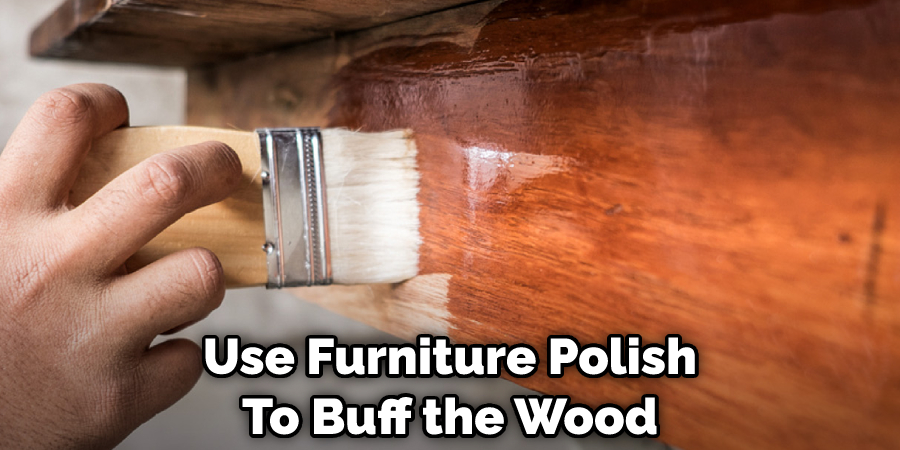
Following these steps on how to fix sticky wood stain will help you achieve a beautiful and smooth finish for your wood stain project. Remember to always read the manufacturer’s instructions and take your time to ensure proper application and drying times. With patience and attention to detail, your wood stain project will turn out perfectly every time. Now go forth and enjoy your beautifully stained wood!
Do You Need to Use Professionals Help?
While staining wood may seem like a straightforward process, it does require attention to detail and proper technique. If you are inexperienced or unsure about staining your wood project, it may be best to seek the help of a professional. They have the expertise and equipment necessary to achieve a smooth and flawless finish.
Additionally, if your wood is damaged or has existing stains that need to be removed, a professional may be able to assist in repairing and preparing the surface properly before staining. This can save you time and effort in the long run.
How Much Could It Cost?
The cost of staining wood can vary depending on the size and complexity of your project. If you are hiring a professional, they will typically charge an hourly or per-project fee. The type and quality of the stain used can also affect the cost. You may also need to factor in the cost of materials such as sandpaper, brushes, rags, and any protective finish. Be sure to budget accordingly and communicate with your chosen professional for an accurate estimate.
You Can Check It Out to Fix Wood Corners
Frequently Asked Questions:
Q: Can I Use Any Type of Stain on Any Wood?
A: No, it is important to choose the right type of stain for your specific type of wood. Different types of wood absorb stains differently, so be sure to do research or consult a professional before choosing a stain. It is also essential to test a small area first before applying it to the entire surface.
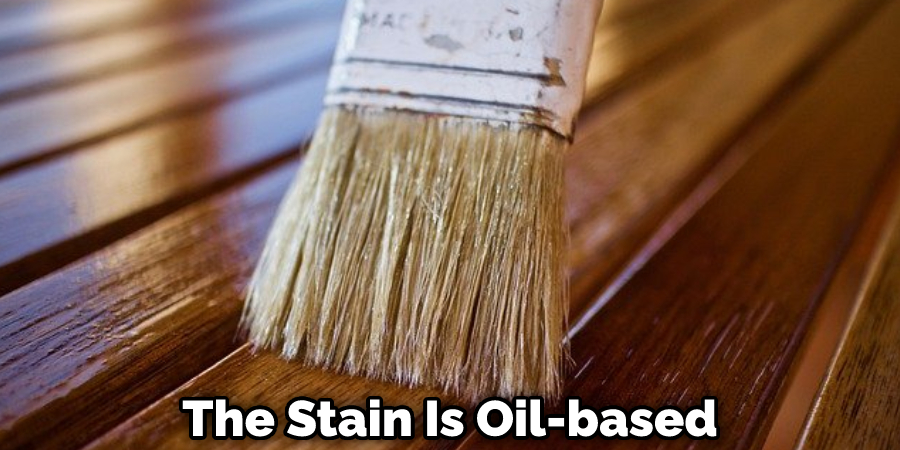
You should also consider the desired finish and color when choosing a stain. For example, if you want a lighter color, consider using a water-based stain instead of an oil-based one.
Q: Can I Stain Over the Existing Stain?
A: It is possible to restain wood over an existing stain, but it may not turn out as desired. The old stain can affect the absorption and color of the new stain, resulting in an uneven or undesirable finish. Striping or sanding off the old stain before applying a new one is recommended for best results.
You can also test a small area first to see how the new stain will interact with the old one. If it turns out well, you can continue with the rest of the project.
Q: How Do I Know When My Wood is Ready For Staining?
A: The wood should be clean, dry, and free of any previous finishes before staining. You can test this by sprinkling a few drops of water on the surface. If it absorbs into the wood, it is ready for staining. If it beads up or sits on top of the surface, you may need to sand or strip off any previous finishes before proceeding.
Q: How Do I Clean Up After Staining?
A: Cleaning up after staining is important to maintain your tools and prevent any staining accidents. Mineral spirits or a specific cleaning solution for wood stains are recommended. Be sure to follow the manufacturer’s instructions and wear protective gear when handling these chemicals. You can also reuse rags or brushes by soaking them in water until ready to use again. Properly dispose of any leftover stains and materials according to local regulations.
Q: Can I Stain Outdoor Wood?
A: Yes, there are specific types of wood stains formulated for outdoor use. These stains contain additives that can protect against UV rays and weather elements. When staining outdoor wood, it is crucial to properly prepare the surface by sanding and cleaning it before applying the stain. You may also need to reapply the protective finish more frequently than indoor wood to maintain its appearance and durability. Always check the manufacturer’s instructions for specific guidelines and recommended maintenance for outdoor stains.
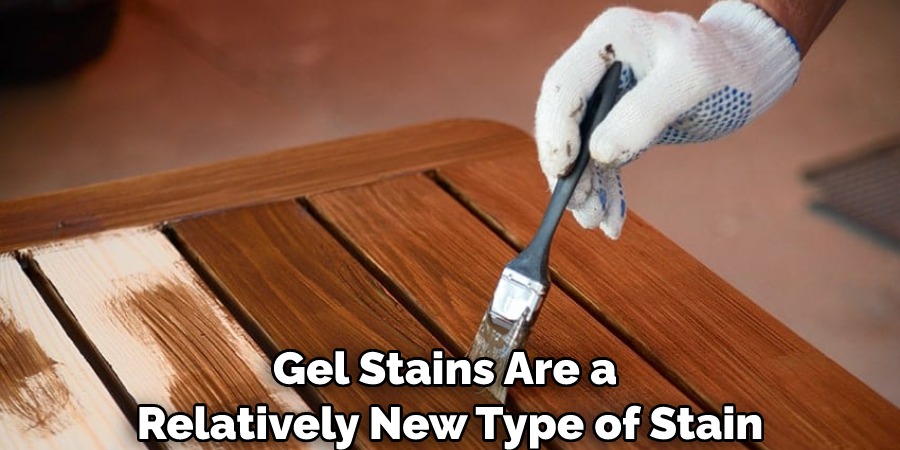
Conclusion:
Undertaking a wood staining project is both a practical and artistic endeavor. It not only enhances the aesthetic appeal of wood but also provides protection against external elements, extending the lifespan of your wooden furnishings and structures. However, achieving a smooth and even finish requires patience, precision, and, sometimes, professional intervention. From selecting the right type of stain for your wood to understanding the importance of a clean work surface and adequate drying times, every step is crucial.
Whether you decide to tackle the project on your own or enlist professional help, the satisfaction of seeing your woodwork transformed and revitalized is immensely rewarding. Remember, the key to a successful staining project lies in meticulous preparation, careful application, and the willingness to invest the necessary time and effort. Thanks for reading this article on how to fix sticky wood stain.
You Can Check It Out to Fix Dent in Wooden Door

